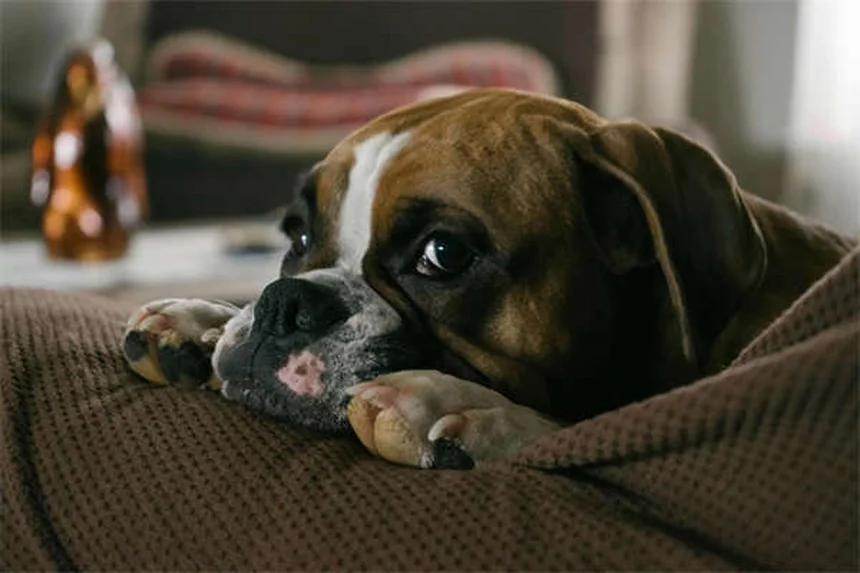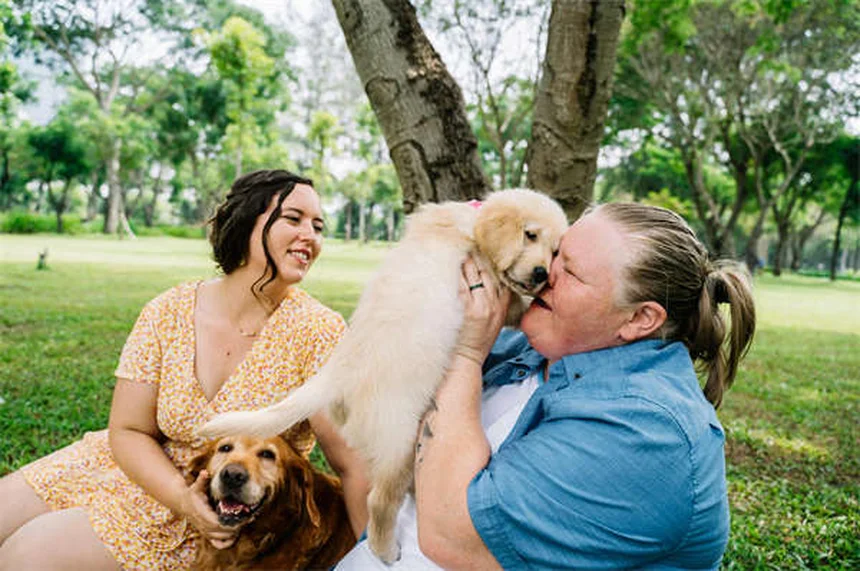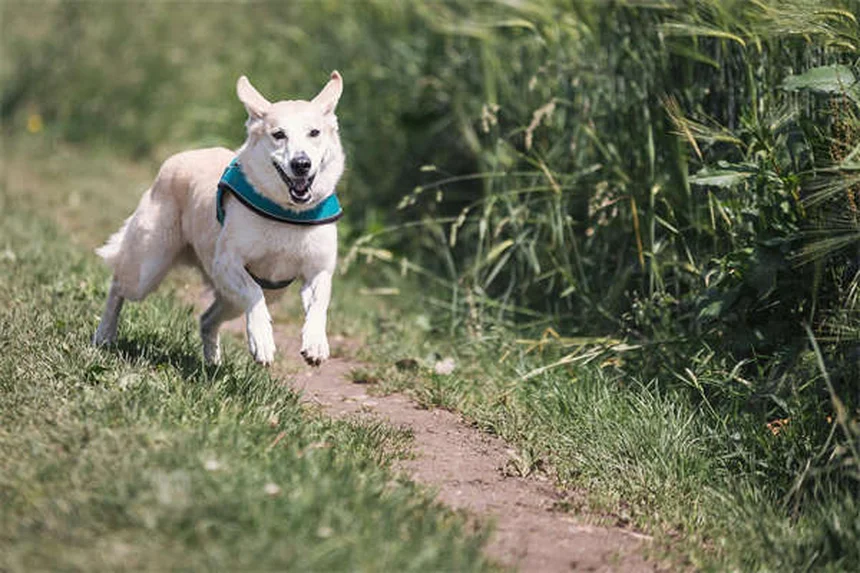Why Is My Dog Drooling So Much? 5 Common Causes & When to Worry
Why is my dog drooling excessively? The answer is: Excessive dog drooling can signal anything from normal excitement to serious health issues! If you're noticing your pup suddenly drooling way more than usual, it's time to pay attention. I've seen countless cases where drooling was the first clue something wasn't right with a dog's health.In this guide, we'll break down the 5 most common reasons dogs drool excessively, when it's an emergency, and what you should do about it. Whether it's dental problems, stomach issues, or something more serious, you'll learn how to spot the difference between normal slobber and warning signs. Trust me, as a dog owner myself, understanding your pup's drool patterns can be a real lifesaver!
E.g. :Comfortis® for Dogs & Cats: Fast-Acting Flea Treatment Guide
- 1、Understanding Your Dog's Drooling Habits
- 2、Common Causes of Excessive Drooling
- 3、Emergency Situations
- 4、Diagnosis and Treatment Options
- 5、Prevention Tips
- 6、Answering Your Top Questions
- 7、Final Thoughts
- 8、Beyond the Basics: Exploring Lesser-Known Drooling Facts
- 9、Environmental Factors You Might Not Consider
- 10、Cultural Perspectives on Dog Drool
- 11、Advanced Drool Management Techniques
- 12、The Future of Drool Research
- 13、Your Drool Questions Answered
- 14、FAQs
Understanding Your Dog's Drooling Habits
Why Do Dogs Drool in the First Place?
Let's start with the basics - drooling is completely normal for most dogs. When your pup sees that delicious treat in your hand or smells their favorite food, those salivary glands in their neck and jaw area kick into high gear. The saliva helps with digestion, but sometimes it escapes their mouth - that's when we see the classic drool strings!
Now here's something interesting - did you know some breeds are basically walking drool factories? Take the Mastiff or St. Bernard for example. Their big, floppy lips make them drool champions. But if your dog suddenly starts drooling like they're in a drool competition when they normally don't, that's when we need to pay attention.
When Should Drooling Worry You?
Picture this: your dog who never drools suddenly has saliva dripping like a leaky faucet. That's your cue to investigate. Excessive drooling can signal anything from a simple upset stomach to more serious health issues. I always tell my friends - if your dog's drooling habits change dramatically, it's better to be safe than sorry.
Here's a quick checklist of when to call your vet:• New or sudden excessive drooling• Drooling accompanied by other symptoms• Changes in eating or behavior
Common Causes of Excessive Drooling
 Photos provided by pixabay
Photos provided by pixabay
Dental and Mouth Issues
Imagine trying to eat with a toothache - not fun, right? Dogs experience similar discomfort. Gum disease, mouth injuries, or infections can all cause excessive drooling. I once had a client whose dog drooled non-stop - turns out he had a tiny bone fragment stuck in his gums!
Watch for these red flags:• Bad breath that could knock you over• Blood or pus in the saliva• Reluctance to eat or chew• Pawing at the mouth
Stomach and Digestive Problems
Ever felt so nauseous you could drool? Dogs get that too! Gastrointestinal issues like gastritis or pancreatitis often cause nausea, leading to excessive drooling. Here's a helpful comparison table:
| Condition | Other Symptoms | Action Needed |
|---|---|---|
| Upset Stomach | Lack of appetite, occasional vomiting | Monitor for 24 hours |
| Serious GI Issue | Repeated vomiting, diarrhea, lethargy | Vet visit ASAP |
Emergency Situations
When Drooling Means "Get to the Vet Now!"
Did you know some causes of drooling require immediate attention? Toxins, electrical burns, or neurological issues can be life-threatening. I'll never forget the time my neighbor's dog chewed an electrical cord - the drooling was the first warning sign.
Ask yourself this: Is my dog's drooling accompanied by any of these?• Difficulty breathing• Seizures• Extreme lethargy• Bleeding from the mouth
If you answered yes to any, don't wait - call your vet immediately. Better to be the overprotective pet parent than regret not acting fast enough.
 Photos provided by pixabay
Photos provided by pixabay
Dental and Mouth Issues
Here's something many owners don't realize - stress can make dogs drool buckets! Car rides, vet visits, or even thunderstorms can trigger anxiety-induced drooling. My own dog turns into a drool machine during fireworks - we've learned to prepare with calming treats and a safe space.
Diagnosis and Treatment Options
What to Expect at the Vet
Wondering how vets figure out why your dog is drooling? They'll start with a thorough physical exam, checking your dog's mouth, neck, and overall condition. Be ready to answer questions about:• When the drooling started• Any recent changes in diet or environment• Possible exposure to toxins
The vet might recommend tests like bloodwork or X-rays. In more complex cases, they may suggest advanced imaging like MRI or ultrasound. Remember - these tests help pinpoint the exact cause so your pup gets the right treatment.
Treatment Approaches
Treatment depends entirely on the underlying cause. For dental issues, your vet might recommend:• Professional cleaning• Tooth extraction if necessary• Antibiotics for infections
For more serious conditions like tumors or congenital defects, surgery might be needed. The good news? Many cases respond well to treatment. I've seen dogs go from constant drooling to completely normal once their underlying issue was addressed.
Prevention Tips
 Photos provided by pixabay
Photos provided by pixabay
Dental and Mouth Issues
Prevention is always better than cure! Here are my top tips for maintaining your dog's oral health:• Brush their teeth regularly (yes, really!)• Use dental chews approved by your vet• Schedule annual dental check-ups
Fun fact: Did you hear about the dog who opened a toothpaste factory? He wanted to make minty fresh breath for all his friends! Okay, bad joke - but seriously, dental care matters.
Diet and Environment Safety
What your dog eats (and what they might try to eat) plays a big role in drooling prevention. Always:• Transition foods gradually to avoid stomach upset• Keep toxic substances out of reach• Supervise with chew toys to prevent mouth injuries
Remember that table we looked at earlier? Here's another helpful comparison:
| Prevention Method | Benefit | Frequency |
|---|---|---|
| Teeth Brushing | Reduces plaque and gum disease | Daily |
| Dental Check-ups | Catches problems early | Annual |
Answering Your Top Questions
Age and Drooling - What's Normal?
Here's a question I get all the time: "Do dogs drool more as they age?" Generally, no. If your senior dog starts drooling excessively, it could signal dental issues or other health concerns. My rule of thumb? Any new drooling in older dogs warrants a vet visit.
The Upset Stomach Connection
Why do dogs drool when nauseous? Think about when you're about to throw up - your mouth waters, right? Same for dogs! Excessive drooling often precedes vomiting. If your dog seems sick and is drooling more than usual, they might need veterinary attention.
Here's something to ponder: Did you know some dogs drool when they're carsick? It's their version of motion sickness. If your pup turns into a drool fountain on car rides, ask your vet about prevention options.
Final Thoughts
Trust Your Instincts
At the end of the day, you know your dog best. If their drooling seems off, don't hesitate to call your vet. I always say - it's better to make that extra vet visit than to wish you had.
Creating a Drool Management Plan
For chronic droolers (looking at you, Mastiff owners!), keep these handy:• Absorbent towels in strategic locations• Waterproof covers for furniture• Regular mouth checks for early problem detection
Remember, while some drooling is normal, sudden changes always deserve attention. Your furry friend relies on you to notice when something's not right - and with this information, you're well equipped to do just that!
Beyond the Basics: Exploring Lesser-Known Drooling Facts
The Science Behind Dog Saliva
You might think drool is just messy water, but it's actually packed with enzymes that help break down food before it even hits their stomach! Dog saliva contains amylase, which starts digesting carbohydrates right in their mouth. That's why some dogs seem to "pre-digest" their food when they carry it around in their mouths.
Here's a cool experiment you can try at home: Notice how your dog's drool consistency changes based on what they're eating? Dry kibble often produces thicker saliva, while wet food leads to more watery drool. It's their body's way of adjusting to different food textures!
Breed-Specific Drooling Quirks
While we know Mastiffs and St. Bernards are drool champions, did you know Bloodhounds have specially designed lips to channel drool away from their face? Nature's built-in drool management system! On the flip side, breeds like Greyhounds barely drool at all - their tight lips keep everything neatly contained.
Check out this drool rating scale for popular breeds:
| Breed | Drool Level (1-5) | Special Feature |
|---|---|---|
| Bulldog | 4 | Jowls act as saliva reservoirs |
| Labrador | 2 | Only drools when food is present |
| Great Dane | 5 | Can shake head and create drool showers |
Environmental Factors You Might Not Consider
Temperature and Drooling Patterns
Ever notice your dog drooling more in summer? That's because panting and drooling work together to help regulate body temperature. The evaporation of saliva from their tongue and mouth helps cool them down - nature's air conditioning system!
But here's something surprising - some dogs actually drool more in cold weather too! The chilly air can irritate their mouth and throat, triggering extra saliva production. My neighbor's Boxer starts drooling like crazy the moment the temperature drops below freezing.
The Emotional Drooling Phenomenon
Did you know dogs can drool from excitement or happiness? It's not just about food! When your pup greets you with slobbery kisses after work, that's their version of happy tears. I've seen dogs start dripping saliva the moment their favorite human picks up the leash for walk time.
Here's a fun fact: Some service dogs are trained to suppress their drooling response during work hours, then let it all out when their vest comes off. Talk about professional discipline!
Cultural Perspectives on Dog Drool
Historical Uses of Dog Saliva
Believe it or not, ancient cultures had some interesting beliefs about dog drool. The Greeks thought it had healing properties and would let dogs lick wounds! While we now know that's not hygienic, it shows how long humans have been fascinated by this canine trait.
In some Native American traditions, a dog's drool was seen as a sign of abundance and good fortune. If a hunting dog drooled over the prey, it meant the tribe would have plenty to eat that season.
Modern-Day Drool Etiquette
Ever been to a dog-friendly cafe and had to navigate the drool situation? Many establishments now provide "drool rags" for big slobbery breeds. Some high-end pet stores even sell fashionable drool bibs - because why should babies have all the fun?
Here's a tip from personal experience: Always carry an extra towel in your car if you have a drooly dog. Nothing worse than realizing too late that your passenger seat is now a saliva slip-n-slide!
Advanced Drool Management Techniques
Training Tips for Excessive Droolers
Can you train a dog to drool less? To some extent, yes! Teaching a "wipe your mouth" command can help. Hold a towel near their mouth, say "clean up," and reward when they rub their face against it. With patience, many dogs learn to do this automatically after drinking or eating.
But here's the million dollar question: Should you really try to stop all drooling? The answer is no - some drooling is natural and healthy. Focus on managing excessive drool rather than eliminating it completely. Your dog's mouth needs to stay lubricated for proper digestion and oral health.
Creative Solutions for Drool-Prone Homes
Living with a slobbery dog requires some clever adaptations. Try these pro tips:• Use washable slipcovers on furniture• Keep decorative towels within easy reach• Place absorbent mats under water bowls• Invest in a good pet-friendly upholstery cleaner
My personal favorite hack? Teaching my Great Dane to "target" a specific towel when he feels drool coming on. It took months of training, but now he heads to his "drool station" when he needs to shake his head. Small victories!
The Future of Drool Research
Canine Saliva in Medical Detection
Here's something exciting - scientists are studying dog drool for early disease detection! Just like humans can get DNA tests from saliva, researchers believe canine drool might contain biomarkers for various health conditions. Imagine your vet swabbing your dog's mouth during annual checkups to screen for potential issues!
Some service dog organizations are already training medical alert dogs to recognize changes in human saliva that indicate impending health crises. Who knew drool could be so potentially life-saving?
Biodegradable Drool Products
With the eco-conscious movement growing, pet product companies are developing sustainable solutions for drool management. Look for:• Bamboo fiber drool towels• Plant-based enzymatic cleaners• Compostable drool bibs
I recently tried a new biodegradable drool cloth that actually breaks down in my compost pile. It's not perfect yet, but it's exciting to see innovation in this unexpected area of pet care!
Your Drool Questions Answered
Why Do Some Dogs Drool More at Night?
If you notice your dog leaving drool puddles in their bed overnight, it could be because they're more relaxed. Just like humans might drool when sleeping deeply, dogs often produce more saliva when completely at ease. Unless it's excessive, this is usually nothing to worry about.
The Mystery of Phantom Drooling
Ever seen your dog drool when there's no food in sight? This "phantom drooling" often happens when they anticipate something enjoyable - like seeing you grab their leash or hearing the treat jar open. It's their body preparing for something good, even before it arrives!
Here's something to think about: Does your dog have certain triggers that always make them drool? Pay attention to these patterns - they can tell you a lot about what really excites your furry friend!
E.g. :Excessive Drooling in Dogs | PetMD
FAQs
Q: Do dogs drool more when they're nauseous?
A: Absolutely! Just like humans, dogs often drool excessively when they're feeling nauseous. I've noticed this happens frequently with my own dog when he's got an upset stomach. The drooling usually comes before vomiting, so if you see your pup suddenly producing way more saliva than normal, keep an eye out for other signs of sickness like loss of appetite or lethargy. Many gastrointestinal issues - from simple indigestion to more serious conditions like pancreatitis - can cause this reaction. If the drooling persists more than a day or comes with other symptoms, it's definitely time to call your vet.
Q: Should I worry if my dog never drools but suddenly starts?
A: Yes, this is when you should be concerned. As someone who's worked with dogs for years, I always tell owners that sudden changes in drooling habits are worth investigating. If your dog who normally keeps a dry mouth suddenly turns into a drool fountain, it could indicate anything from dental pain to poisoning. I remember one case where a dog's new drooling turned out to be from a piece of bone stuck in his gums! The key is to look for other symptoms and consider what your dog might have gotten into recently.
Q: Are some dog breeds just naturally heavy droolers?
A: You bet! Some breeds are practically professional droolers. Mastiffs, St. Bernards, and Bloodhounds are famous for their slobbery tendencies - it comes with those adorable loose jowls! I've had clients shocked by how much their new Mastiff puppy drools, but it's completely normal for these breeds. The drool becomes problematic only if it's excessive even for their breed standards or if it's a new behavior. So if you've got a naturally drooly breed, stock up on drool rags and enjoy the messy love!
Q: Can anxiety cause excessive drooling in dogs?
A: Yes, stress can definitely trigger drooling - I see this all the time in my practice. Many dogs drool excessively during car rides, vet visits, or thunderstorms. My own Labrador turns into a drool machine during fireworks! The key is recognizing the context. If the drooling happens during stressful events and stops when your dog calms down, it's likely anxiety-related. For chronic cases, we might recommend behavior modification or anti-anxiety solutions. But remember - if you're not sure whether it's stress or something more serious, always check with your vet.
Q: What emergency signs should I look for with excessive drooling?
A: Here are the red flags I always tell dog owners to watch for: difficulty breathing, seizures, extreme lethargy, or bleeding from the mouth. I'll never forget the emergency case where a dog's excessive drooling turned out to be from chewing an electrical cord! Other warning signs include sudden behavior changes, trouble swallowing, or uneven pupils. If your dog's drooling comes with any of these symptoms, don't wait - get to the vet immediately. It's always better to be safe than sorry when it comes to your furry friend's health.







